The PowerWalker VI 1500 CSW UPS Review: Trying For True Sinewave on a Budget
by E. Fylladitakis on April 13, 2022 8:00 AM EST- Posted in
- Cases/Cooling/PSUs
- UPS
- PowerWalker
- BlueWalker
- 1500VA
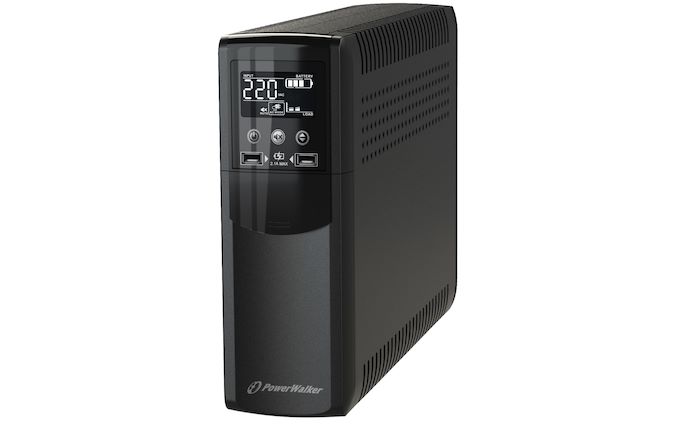
Editor's Note: Today we're kicking off a new review category for AnandTech: Uninterruptible Power Supplies. These devices are becoming increasingly common as desktop users are looking for laptop-like reliability. All the while, it's also an area that we feel is lacking in good, EE-enlightened systematic reviews. So our multi-talented power guru, E. Fylladitakis, is applying his skills to UPSes. As this is a new area for us, please let us know what you think in the comments below!
While Uninterruptible Power Supplies are hardly a new thing in the PC space, the tried-and-true battery backups for desktop PCs have been undergoing a resurgence in popularity in recent years. Improvements in power delivery technology such as GaNs have been reducing costs and improving reliability, and meanwhile lithium-ion batteries, with their much greater energy density/lower volume, are starting to make inroads on the UPS market as well. All the while, with laptops outselling desktops in the consumer PC market, a PC that doesn't shut itself down during a power outage is becoming the norm, rather than the exception. So what better time is there to take a look at UPSes?
To kick off our inaugural UPS review, we're starting with a 1500VA unit from BlueWalker. BlueWalker is a company that originates from Germany and specializes on the design and marketing of power-related equipment. The company was founded in 2004, making it one of the oldest household UPS/AVR manufacturers that still exist to this date.
BlueWalker is marketing their retail products under the PowerWalker brand name and has a very wide portfolio of both hardware and software products available. For today’s review, we are taking a look at the PowerWalker VI 1500 CSW, a 1500VA/900W UPS that boasts a true sinewave output.
| PowerWalker VI 1500 CSW | |||
| Power Capacity | 1500VA/900W | ||
| Output Voltage | 230 VAC | ||
| Input Voltage | 170-280 VAC | ||
| Type | Line Interactive | ||
| True Sinewave | Yes (ish) | ||
| Battery | Lead-Acid, 2x 12V/9Ah | ||
| Full Load Backup Time | 3.5min | ||
| Half Load Backup Time | 10min | ||
| Battery-Backed Sockets | 2 (Type F) | ||
| Surge Protected Sockets | 2 (Type F) | ||
| USB-A Outputs | 2 (2.1A) | ||
| Ethernet Surge Protection | Yes | ||
| LCD Display | Yes | ||
| Dimensions | 99 x 280 x 410 mm | ||
| Weight | 13.1 kg | ||
Given that BlueWalker is a German company, there should be little surprise that the PowerWalker VI is geared towards the European market. The UPS only outputs at a nominal 230V, and similarly, is only designed to accept voltages around that range (sorry, Americans!). Past that, this specific version comes with 2 battery-backed Type F sockets, as well as another two sockets with just surge protection. With 216 Wh of lead-acid battery capacity, it's rated to run a full load for a few minutes, stretching into the double-digits at a half load or less.
Of particular interest with this UPS is the price: true sinewave units have historically carried a significant price premium, but BlueWalker isn't charging nearly the same premium as true sinewave UPSes from other major manufacturers, making the PowerWalker VI 1500 CSW a much cheaper UPS – and at around €180, one that's popular on the market as a result. But can it live up to the same high power delivery expectations without the same wallet-busting price? Let's find out.
The PowerWalker VI 1500 CSW UPS
We received the PowerWalker VI 1500 CSW in a relatively simple cardboard box, with the heavy unit well-protected by thick packaging foam pieces. Inside the box, we found a CD with the compatible monitoring software, thorough manuals in several languages, and a USB cable.
The PowerWalker VI 1500 CSW is a tower-style UPS with an LCD screen at the front. Measuring only 410 mm deep, 100 mm wide, and 280 mm tall (16.2 in × 4 in × 11 in), it is very compact for a unit with that high of an output. There are also two USB charging ports at the front, right under the LCD screen.
The LCD screen, once turned on, will show the basic electrical figures of the unit, such as the voltage, the load, and the remaining battery time. It stays off most of the time and the user needs to press the power button momentarily in order to turn it on.
At the rear side of the tower, we find four power sockets. We are testing the version with the four Schuko (Type F) sockets, but BlueWalker also offers this unit with UK and FR sockets, plus a version with eight IEC socket.
Note that only two sockets offer battery backup, as the other two are for surge protection only. In fact, having just two sockets connected to the unit’s battery backup output is an atypically low number of powered sockets for a 1500VA UPS, as we usually see more.
Along with power protection, there is also a non-destructive circuit breaker and an Ethernet surge protection path (input-output jacks) available with the PowerWalker. Finally, there is a fan that will only turn on when the unit is running on batteries, charging its batteries, or in auto voltage regulation (AVR) mode. The AVR mode essentially has the unit running on grid power but forces the AVR circuit to operate, which may be useful in some situations where the power grid is energized, but very unreliable.
More than half of the front fascia is a door that must be removed in order to access the battery compartment. It is held in place by two small screws at the bottom side of the unit. Once removed, a very large connector can be seen that connects the batteries to the main unit. This needs to be unplugged in order to remove the batteries. If the batteries need to be replaced, the wiring must be unplugged and transferred to the new batteries. We found two Leoch 12V 9Ah batteries in the unit, connected in series (24V 9Ah output). Leoch is a Chinese manufacturer of batteries that is amongst the largest on the planet and whose products are considered to be of fairly good quality.
Cracking open the unit’s body, we can see the unit’s large transformer and circuitry. The transformer actually is not very large for the 1500 VA unit and the amount of cooling it receives from the fan is fairly low. This will not be a problem for the stock unit, where the batteries will likely last just a few minutes, as there will not be enough time for the transformer to overheat. Modifying the unit’s batteries to increase its autonomy in any way without greatly upgrading its cooling capabilities would be, however, nothing short of suicidal.
The power circuitry left us with mixed feelings. The relays are supplied by Golden Relays, a reputable manufacturer, yet the capacitors are supplied by Aishi and Jamicon, suppliers that are considered to be mediocre. Eight IRF3205 MOSFETs generate the output when the unit switches to its batteries, MOSFETs that are proven to be reliable but, having been released well over two decades ago, are nowadays very cheap and their performance is relatively poor compared to more modern MOSFETs. The workmanship is very good but the circuitry layout is fairly outdated.


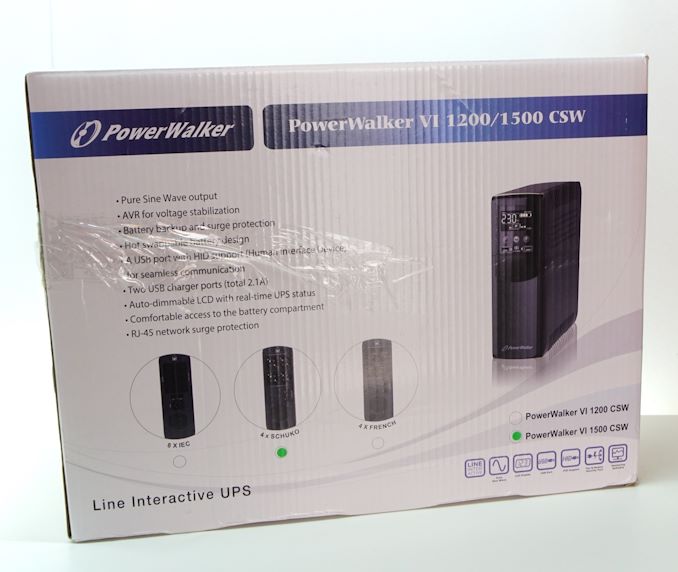

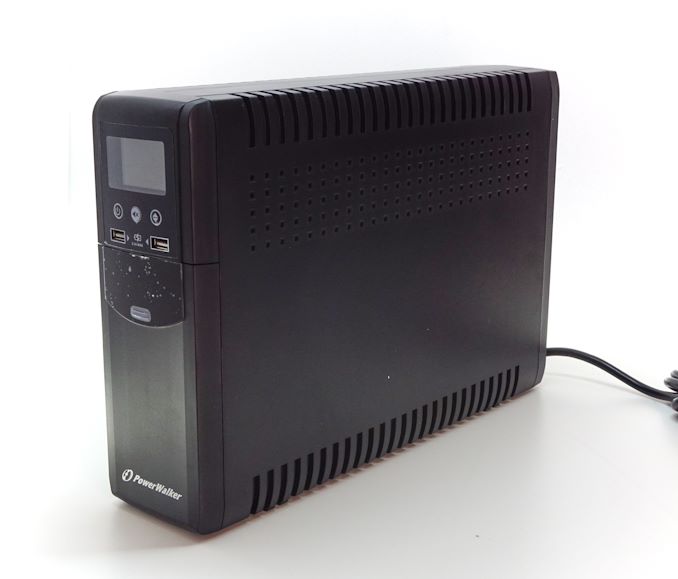
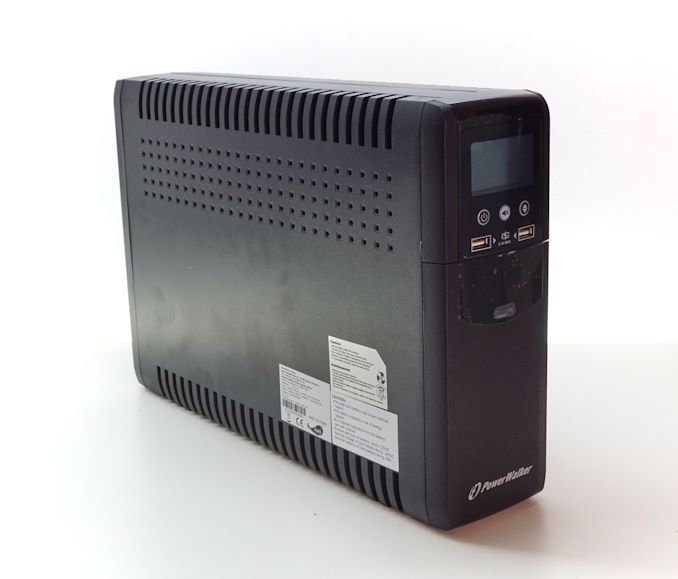
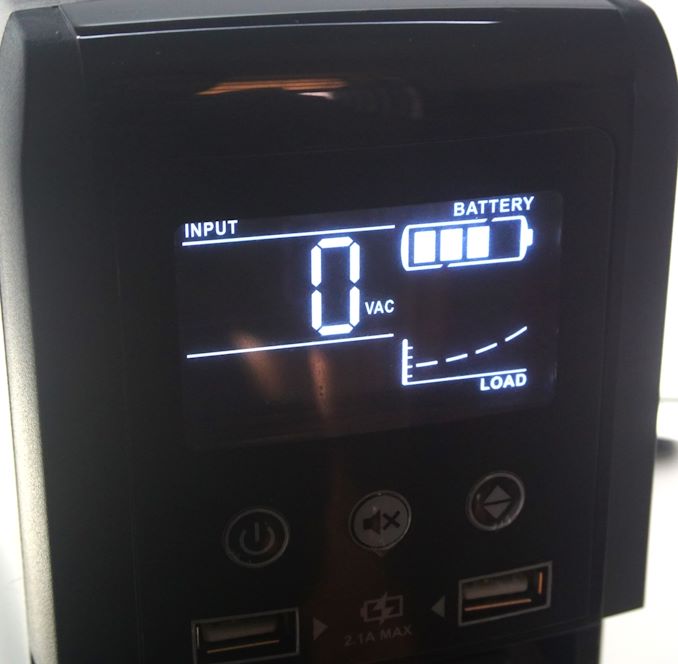

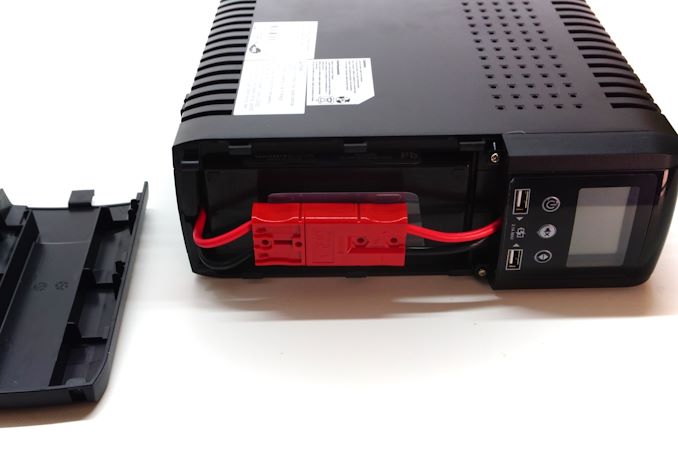
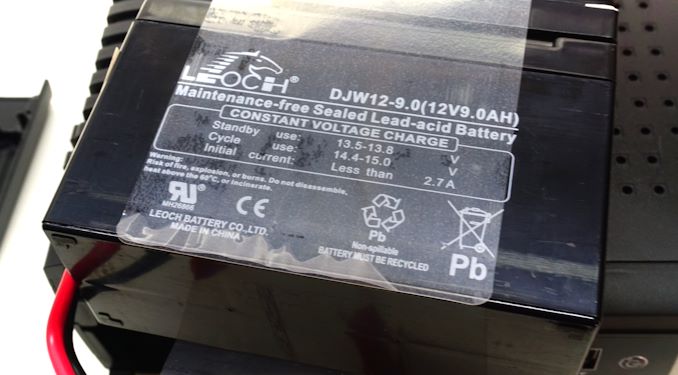
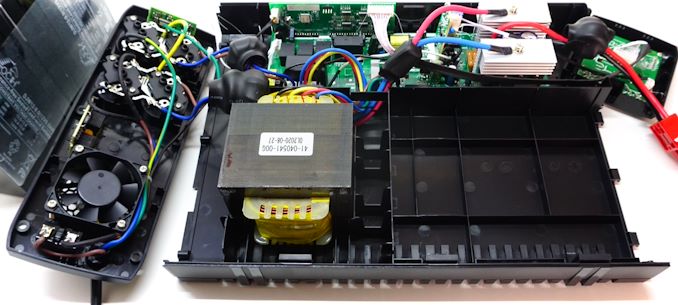

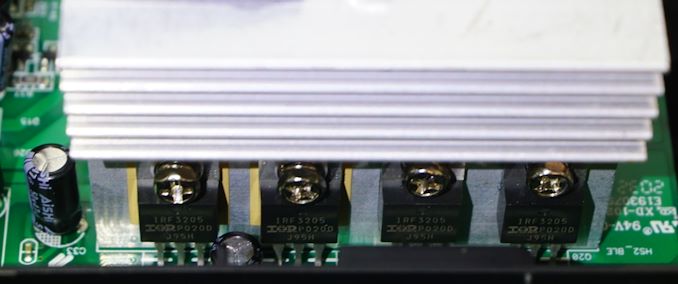

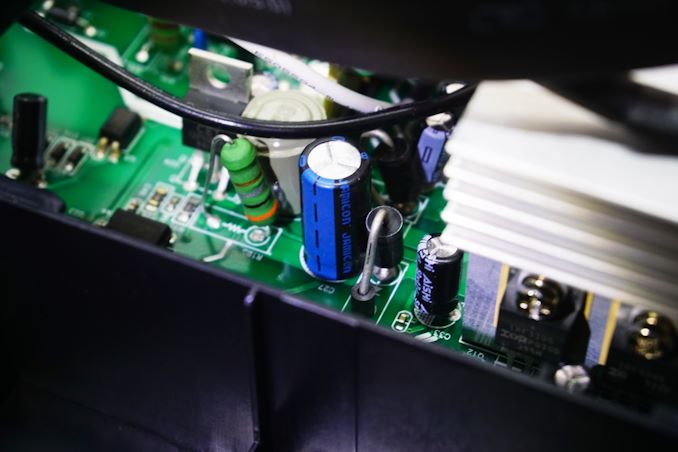
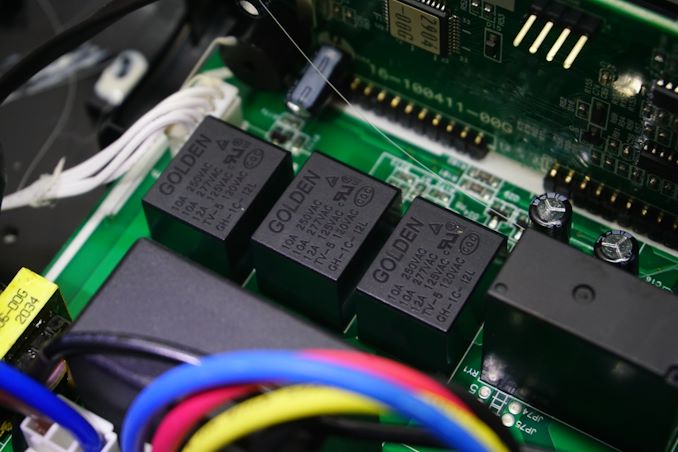








107 Comments
View All Comments
Thunder 57 - Friday, April 15, 2022 - link
Same. Well, almost. Mine is a slightly older model with the only real changes being 2 x USB type A and a different LCD. It's worked great for me. 2 x 8.5AH batteries too not the usual 7AH. I'd replace them with 9AH ones but it seems like too much work for too little result.Definitely like the UPS review(s) though, keep them coming!
mode_13h - Wednesday, April 13, 2022 - link
Also, I wonder how feasible it'd be to test or at least teardown some Ethernet surge protectors. Right now, I've got my cable modem on its own small UPS, then a gig-E surge protector separates it from my router. If that surge protector turns out to be garbage, then I might as well just run everything on a single UPS.FYI, the one I'm using is Tupavco TP302, purchased on Amazon.
Einy0 - Wednesday, April 13, 2022 - link
"The UPS only outputs at a nominal 230V, and similarly, is only designed to accept voltages around that range (sorry, Americans!)."I'm going to pretend you mentioned the frequency difference as a reason for Americans not to use this or the outlet form factors.
Eletriarnation - Wednesday, April 13, 2022 - link
Unless there's a model with North American standard outlets, I don't think it will be very popular there anyway.Eletriarnation - Wednesday, April 13, 2022 - link
Ah sorry, I see you mentioned the outlets. Entirely correct though, the 230V in/out isn't necessarily an issue as much as the other things.DanNeely - Wednesday, April 13, 2022 - link
Probably not, but most modern electronics have 100-240V PSUs; so all someone wanting to use it in the US would need is to wire a 240V outlet and then import some device powercords along with the UPS. So we could use it if we really wanted to.Calin - Thursday, April 14, 2022 - link
Most of the UPS units I saw (that was a long time ago though) had detachable power cords of the "PC" style. If this is the case, powering up the UPS is no issue at all, as the PC power cords in local style are easy to find. As for output, there are "universal adaptors" (but they might not support higher amperage)mode_13h - Thursday, April 14, 2022 - link
I don't recall ever seeing a UPS with a detachable power cord, in the USA. Most I've seen are APC, but I've seen a couple Cyberpower and other brands.at_clucks - Friday, April 15, 2022 - link
*A lot* of UPSes have the standard IEC 60320 C13/C14 connectors https://en.wikipedia.org/wiki/IEC_60320#C13/C14_co... I don't think I've seen any with a hardwired power cable (Europe, mind you). The more home oriented ones used a C14 connector for mains power and regular power outlets (instead of C13) for connecting the devices since most people want to connect a whole host of devices not just whatever you can connect with a "UPS/PC cable" https://notebookcentre.am/wa-data/public/shop/prod...I used to just replace the cable of a multi outlet extension cord so it has a C14 plug at the other end and plug that into the UPS so things with a power brick would be easy to plug in.
DanNeely - Friday, April 15, 2022 - link
Looking on Amazon, all the UPSes I see - including a few rackmount models - have hard wired power cords. I wonder if US regulations treats them as overgrown powerstrips (which I've also never seen with a detachable input cable).The EU model reviewed here also has a hard wired cable for input power.